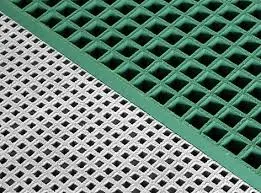
-
 Afrikaans
Afrikaans -
 Albanian
Albanian -
 Amharic
Amharic -
 Arabic
Arabic -
 Armenian
Armenian -
 Azerbaijani
Azerbaijani -
 Basque
Basque -
 Belarusian
Belarusian -
 Bengali
Bengali -
 Bosnian
Bosnian -
 Bulgarian
Bulgarian -
 Catalan
Catalan -
 Cebuano
Cebuano -
 China
China -
 China (Taiwan)
China (Taiwan) -
 Corsican
Corsican -
 Croatian
Croatian -
 Czech
Czech -
 Danish
Danish -
 Dutch
Dutch -
 English
English -
 Esperanto
Esperanto -
 Estonian
Estonian -
 Finnish
Finnish -
 French
French -
 Frisian
Frisian -
 Galician
Galician -
 Georgian
Georgian -
 German
German -
 Greek
Greek -
 Gujarati
Gujarati -
 Haitian Creole
Haitian Creole -
 hausa
hausa -
 hawaiian
hawaiian -
 Hebrew
Hebrew -
 Hindi
Hindi -
 Miao
Miao -
 Hungarian
Hungarian -
 Icelandic
Icelandic -
 igbo
igbo -
 Indonesian
Indonesian -
 irish
irish -
 Italian
Italian -
 Japanese
Japanese -
 Javanese
Javanese -
 Kannada
Kannada -
 kazakh
kazakh -
 Khmer
Khmer -
 Rwandese
Rwandese -
 Korean
Korean -
 Kurdish
Kurdish -
 Kyrgyz
Kyrgyz -
 Lao
Lao -
 Latin
Latin -
 Latvian
Latvian -
 Lithuanian
Lithuanian -
 Luxembourgish
Luxembourgish -
 Macedonian
Macedonian -
 Malgashi
Malgashi -
 Malay
Malay -
 Malayalam
Malayalam -
 Maltese
Maltese -
 Maori
Maori -
 Marathi
Marathi -
 Mongolian
Mongolian -
 Myanmar
Myanmar -
 Nepali
Nepali -
 Norwegian
Norwegian -
 Norwegian
Norwegian -
 Occitan
Occitan -
 Pashto
Pashto -
 Persian
Persian -
 Polish
Polish -
 Portuguese
Portuguese -
 Punjabi
Punjabi -
 Romanian
Romanian -
 Russian
Russian -
 Samoan
Samoan -
 Scottish Gaelic
Scottish Gaelic -
 Serbian
Serbian -
 Sesotho
Sesotho -
 Shona
Shona -
 Sindhi
Sindhi -
 Sinhala
Sinhala -
 Slovak
Slovak -
 Slovenian
Slovenian -
 Somali
Somali -
 Spanish
Spanish -
 Sundanese
Sundanese -
 Swahili
Swahili -
 Swedish
Swedish -
 Tagalog
Tagalog -
 Tajik
Tajik -
 Tamil
Tamil -
 Tatar
Tatar -
 Telugu
Telugu -
 Thai
Thai -
 Turkish
Turkish -
 Turkmen
Turkmen -
 Ukrainian
Ukrainian -
 Urdu
Urdu -
 Uighur
Uighur -
 Uzbek
Uzbek -
 Vietnamese
Vietnamese -
 Welsh
Welsh -
 Bantu
Bantu -
 Yiddish
Yiddish -
 Yoruba
Yoruba -
 Zulu
Zulu
Elevated Solutions with FRP Handrails for Safety and Durability in Construction
The Significance of FRP Handrails in Modern Construction
In today's rapidly advancing construction industry, the use of specialized materials has become crucial for safety, efficiency, and durability. One such material that is gaining traction is Fiber Reinforced Polymer (FRP), particularly in the application of handrails. FRP handrails offer numerous advantages that make them an ideal choice for a variety of construction projects, from residential buildings to large-scale infrastructure projects. This article will discuss the significant benefits and applications of FRP handrails, highlighting why they are becoming increasingly popular in modern construction.
Durability and Corrosion Resistance
One of the standout features of FRP handrails is their exceptional durability. These handrails are made from a composite material that includes a polymer matrix reinforced with fibers, typically fiberglass or carbon. This composition grants them superior strength-to-weight ratios, making them robust yet lightweight. Unlike traditional materials such as wood or metal, FRP does not rust, corrode, or degrade when exposed to harsh environmental conditions like moisture, chemicals, and UV rays. This property makes FRP handrails ideal for use in chemical plants, coastal areas, and other environments where exposure to corrosive elements is likely.
Enhanced Safety
Safety is paramount in any construction project, and FRP handrails play a crucial role in ensuring it. The non-conductive nature of FRP makes it a perfect choice for installations near electrical hazards. Moreover, the surface of FRP handrails can be designed to provide excellent grip, reducing the chances of slips and falls. Available in various designs and configurations, FRP handrails can be customized to meet specific safety standards, making them an effective solution for balconies, staircases, walkways, and public spaces.
Cost-Effectiveness
While the initial investment in FRP handrails may be higher than that of traditional materials, their long-term cost-effectiveness is noteworthy. The durability and low maintenance requirements of FRP lead to significant savings over time. Since FRP handrails do not require repainting, sealing, or regular upkeep, the total life cycle cost is often lower compared to wood or metal alternatives. Additionally, their quick and easy installation can reduce labor costs and project timelines.
frp handrail

Aesthetic Appeal
In addition to their functional benefits, FRP handrails offer aesthetic versatility. They can be molded into a variety of designs, colors, and finishes, allowing architects and builders to integrate them seamlessly into the overall design of a structure. Whether it’s for an upscale residential project or a commercial building, FRP handrails can enhance the visual appeal while providing the required safety features.
Sustainability
As the world becomes increasingly conscious of environmental issues, the demand for sustainable building materials has risen. FRP composites can be manufactured using recycled materials and are themselves recyclable, making them an eco-friendly choice. Their longevity also contributes to sustainability by reducing the need for frequent replacements, thereby conserving resources.
Applications and Conclusion
The applications of FRP handrails are extensive. They are used in a variety of settings, including industrial plants, pedestrian bridges, stadiums, and more. Their adaptability allows them to cater to different industries and requirements, making them a versatile solution for various construction needs.
In conclusion, FRP handrails represent a significant advancement in construction materials, combining safety, durability, aesthetic versatility, and cost-effectiveness. As builders and architects continue to seek innovative solutions to enhance the safety and functionality of their projects, FRP handrails are poised to become an industry standard. With their myriad benefits, it is clear that the future of handrails in construction is leaning towards the use of Fiber Reinforced Polymers, shaping a safer and more sustainable built environment.









